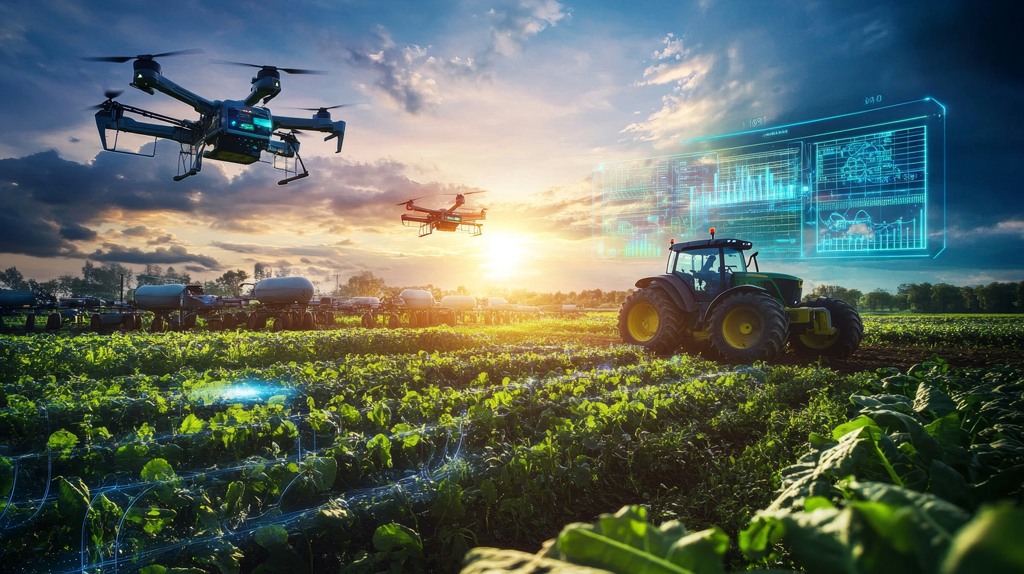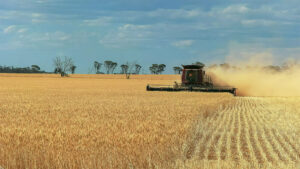Experts weigh in on what agriculture will look like
Will technology dominate the future of farming? Or will we see a shift from intensive farming to simpler, less interventionalist approaches?
In this short article, we’ll examine all possibilities, with predictions from experts.
For a tech driven future, the vision has been set out by the New South Wales Department of Agriculture’s Farms of the Future program. The goal is to “deliver improved connectivity and encourage farmers to adopt Agtech to boost productivity and improve resource management, including water efficiency and drought preparedness.”
In the future farm as seen by the Department, monitors will collect data from multiple sources to help farmers make better informed decisions. Weather, soil monitoring, crop monitoring, irrigation and water level information is collected and connected.
The Farms of the Future website even acts as a showcase for specialist third party technology. Want to track animal movement across your property? Need to track silo levels and temperatures? Enhance farm security? Monitor animal health? Measure plant growth? Detect pests and diseases? All the necessary tech exists now. For farmers who know what tech they want, the Department can connect you to possible government grants. For others, there are training programs available to boost digital skills. So, is tech the future?
Farming For The Future places an emphasis on management of natural capital. What’s included in this definition? “Remnant native vegetation, productive pasturelands and croplands, riparian areas, water resources, agroforestry, environmental plantings and animals.”
In the future, ecological management will become increasingly influential in decisions like bank lending, retail sales and consumer purchase. Farming For The Future aims to show farmers how improving their environmental scorecards will help them achieve their goals. Future farmers are learning to embrace, not fight, nature.
An area of focus is water storage – something that will be critical in the less predictable weather patterns brought about by climate change.
Another is natural shelter. A hotter planet increases heat stress on animals. A future that reverses the extensive land clearing of past decades is essential.
Alasdair MacLeod, Chairman of The Macdoch Foundation, explains the purpose behind creating Farming For The Future:
“Australian farm businesses are facing growing challenges from world markets, changing consumer choices, increasing input prices and most of all, an increasingly uncertain climate.
At the same time, it is becoming clear that, as landowners, we are sitting on assets whose value we have not recognised to the appropriate extent.
My experience as an operator of grazing businesses in various parts of NSW has shown me that investing in the natural capital of our land delivers multiple benefits. It delivers better resilience against drought, it builds a reduced reliance on synthetic inputs and hence more resilient profit and, as we have discovered, an opportunity to earn further revenue from monetisation of improved ecosystem services, like improved soil carbon.
My hope is that Farming for the Future will deliver insights to allow all Australian farm businesses to maximise the potential of their natural capital and provide useful information for how these insights could help producers build more profitable, resilient businesses.”
The rise of mega farms is cited by some as a response to pressure on farm profitability. Just as major global corporations bought up independent and family retail brands, so too did big corporations buy up family farms.
The average broadacre farm in Australia is now 4,700 hectares. The Productivity Commission noted that there are now fewer farms, but they are larger.
The world’s largest farm is the Mundanjiang City Mega Farm, at 22.2 million acres (8.9 million hectares), running 100,000 dairy cows. The biggest farming businesses in Australia are the Australian Agriculture Company (7 million hectares), North Australian Pastoral Company (6 million hectaures), Jumbuck Pastoral Company (5.7 million hectares) and the Handbury Group (5.3 million hectares).
So, are mega farms the way of the future? Not according to the Internation Fund for Agricultural Development. In an article shared by World Economic Forum, the author notes that profits for major farming corporations benefit the few (private owners and shareholders) over the many (local communities).
One criticism of mega farms is that their global food business model contributes to a loss of biodiversity. The world’s farms have lost 75% of their plant genetic diversity in the past 100 years.
Industrial farming techniques, mechanised food handing and long-distance food freight favoured fruits and vegetables that could withstand a bruising journey to market. The 1950s and 60s in Australia were a time of pale tasteless tomatoes, iceberg lettuce and tinned everything – asparagus, beetroot, pineapple, ham and more.
Restaurateurs such as Sydney’s Serge Dansereau encouraged farmers to plant different varieties – and to pick them when they were younger and sweeter.
The influx of Chinese, Greek, Italian, Vietnamese, Lebanese and Thais introduced fruits and vegetables unfamiliar to most Australians. Farmers markets gave small farmers a direct line to consumers ready to try something new.
If the IFAD’s vision is the future of farming, we can expect more niche producers, more heirloom varieties and fewer people between field and plate.
Which of these is the future of farming in Australia? We can’t know for sure. We hope that there’ll always be a future for the small-scale farmers that were traditionally the backbone of local farming.
These are the farmers that excite us at IIF. We’re always looking to introduce our members to farmers taking that extra care, trying something new and resurrecting traditional breeds and varieties in danger of disappearing.
If you’d like a chance to invest in their produce in the future, sign up as a member of the Invest in Farming Co-operative. You can do that here.




